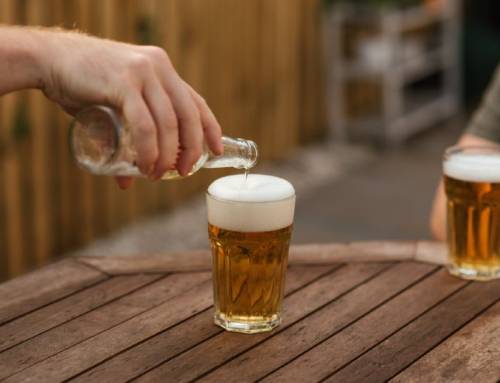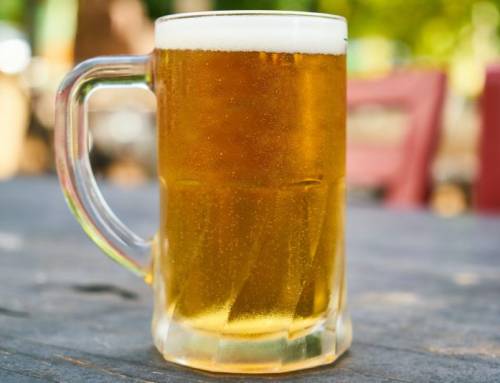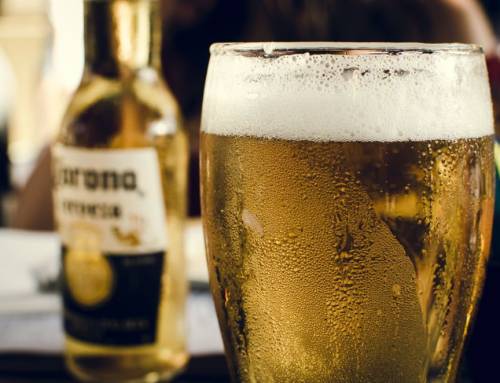1) Exploring the Origins of Unique Beer Styles Around the World
Beer is an age-old beverage that has been celebrated across cultures for centuries. While there are some common beer styles that have been around for a long time, there are also some unique beer styles that have captivated the beer-drinking world. Let’s take a journey around the world and explore the origins of some of these unique beer styles!
First, let’s go to Germany and pay a visit to the Bavarian city of Bamberg. This is the birthplace of the famous smoked beer, Rauchbier. This unique style of beer is made with malt that has been smoked over a beechwood fire, giving it a smoky aroma and flavor. It’s a great beer to enjoy on a cold winter night!
Next, we’ll head to Belgium and check out the birthplace of Lambic beer. This beer style is made with wild yeast and is typically fermented in wooden barrels. It’s a sour beer that has a unique flavor and aroma. This beer style is often used to make other unique beer styles such as Gueuze and Fruit Lambic.
Finally, let’s head to the United States and explore the origins of the American IPA. This beer style is made with American hops that give it a citrusy and floral aroma and flavor. It’s a great beer to enjoy on a hot summer day!
So there you have it – a quick tour of the origins of some of the world’s most unique beer styles. From smoky Rauchbier to sour Lambic to hoppy American IPAs, there’s something for everyone to enjoy! Cheers!
2) The History and Evolution of Beer Styles Across Different Cultures
From the ancient Egyptians to modern-day beer-lovers, beer has been part of many a culture for centuries. It’s been around for so long, in fact, that its history and evolution of beer styles across different cultures is actually quite fascinating!
For instance, did you know that back in ancient Egypt, beer was actually thought of as a gift from the gods? This is why it was seen as a sacred drink, and was even used as a form of currency!
Then, of course, there’s the Germans who gave us the lager style of beer. This is the most popular style of beer in the world today, and it all started in the mid-1800s. With its light flavor and golden hue, it’s easy to see why lager has become so beloved.
The British also have their own unique beer style—the IPA. This beer is incredibly hoppy and bitter and it’s a favorite among craft beer lovers. The IPA actually has a long history—it was first created in the late 1700s and was a favorite of British soldiers stationed in India.
And then, of course, there’s the U.S.A. Here, beer has been taken to a whole new level. From the light and easy-to-drink American lager, to the bold and flavorful craft beer styles, America has something for everyone.
So, if you’re looking for a fun, educational way to explore the history and evolution of beer styles across different cultures, why not grab a pint and take a sip through time? Cheers!
3) What Makes a Beer Style Unique? A Comparison of Flavor Profiles Across the Globe
What makes a beer different from all the rest? Is it the hops, the malts, the yeast, the water, or all of the above? Well, the answer is that all of these things play a part in creating a unique beer style, but the ingredients can vary greatly from region to region. In this article we’ll explore the different flavor profiles that you can find in beer from around the world.
When you think of German beer, you probably think of a malty, strong lager. This is because Germany is known for producing some of the best lagers in the world. The main ingredients for a classic German lager include barley, hops, and yeast, but the difference lies in the hops that are used. German brewers use hops from the Hallertau region, which give their beers a distinct earthy, herbal flavor.
On the other hand, if you’re looking for a hoppy and bitter beer, you should look no further than the United Kingdom. British ales are known for their bold, hoppy flavor and aroma, which comes from the addition of hops such as Fuggles, Goldings, and Progress. The malt used in British ales gives them a sweet, malty backbone that balances out the bitterness.
And if you’re looking for something a bit lighter, you can’t go wrong with a Belgian witbier. These beers are characterized by their refreshing, citrusy flavor and aroma, which is thanks to the addition of orange peel, coriander, and other spices. The light color of this beer comes from the use of wheat and oats in the brewing process.
Finally, you can’t talk about beer without mentioning the United States. American craft beers are known for their big, bold flavors that come from the addition of American hops such as Cascade, Centennial, and Citra. The malt used in American craft beers gives them a slightly sweet and toasty flavor that pairs perfectly with the hops.
No matter where you are in the world, there’s a beer style to suit every taste. From malty lagers to hoppy ales to refreshing witbiers, the world of beer is a vast and diverse one. So grab a pint and explore the flavors of beer around the globe!
4) How Local Ingredients and Brewing Techniques Impact the Character of Beer Styles Around the World
When it comes to beer, every region has its own style and flavor that is a direct result of the local ingredients used and the brewing techniques used to craft it. For instance, German beer is known for its crisp, clean flavor that is achieved by brewing with a combination of barley malt, hops, and water. The type of yeast used in the fermentation process also plays a role in imparting subtle flavors and aromas that are unique to this style of beer.
Meanwhile, Belgian beers are known for their complex and unique flavors that are a result of the addition of spices, sugar, and fruit during the brewing process. The use of wild yeast strains also contributes to the unique flavor profiles that are found in beers like lambics and Flanders red ales.
In the United States, craft breweries have developed a wide range of beer styles that incorporate local ingredients and brewing techniques. While traditional American lagers are still popular, craft brewers have embraced the use of local ingredients like hops, grains, and fruits to create flavorful beers that reflect the region in which they are produced. From juicy IPAs to complex sours, the unique flavors of craft beer have quickly become popular among beer drinkers around the world.
No matter where you go, you’ll find that local ingredients and brewing techniques have a significant impact on the character of beer styles. Whether you’re drinking a German lager or an American IPA, the flavor profile of the beer will be unique to the region in which it was made. So next time you’re out exploring the world, don’t forget to sample the local beer and see how the local ingredients and brewing techniques have shaped the flavor of the beer in that particular region. Cheers!
Conclusion
In conclusion, Around the World in Beer Glasses: A Global Guide to Unique Styles is an informative and comprehensive guide to the many different styles of beer glasses that are available from around the world. It provides an insight into the history and cultural significance of beer glasses and how they vary from region to region. From the traditional pint glass to the unique stein, this book is an invaluable resource for anyone interested in learning more about beer and the world of beer glassware.





